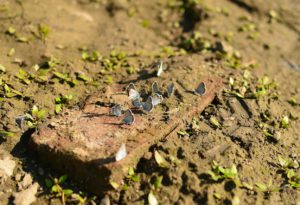In the colorful world of gardening, the choices we make extend beyond selecting the right plants and flowers. The foundation of a thriving garden lies in the soil, and one often underestimated yet impactful element in enhancing soil quality is the use of red mulch. In this article, we will delve into the unique characteristics and benefits of red mulch, exploring its impact on garden soil and how it can transform your gardening experience.
Understanding Red Mulch: A Vibrant Addition to Garden Soil
What is Red Mulch?
Red mulch is a type of mulching material made from dyed wood chips or other organic materials that are colored with a vibrant red hue. While mulch, in general, offers various benefits to gardeners, red mulch stands out due to its distinct color and additional advantages for both plants and soil.
The Visual Appeal:
One of the immediate and noticeable impacts of red mulch is its visual appeal. The bold red color creates a striking contrast against the green foliage of plants, making your garden beds pop with vibrancy. Beyond aesthetics, the visual appeal of red mulch can influence the overall ambiance of your outdoor space.
The Impact on Garden Soil:
1. Temperature Regulation:
Red mulch is renowned for its ability to regulate soil temperature effectively. By reflecting sunlight away from the soil, it helps to keep the ground cooler during hot weather. This is particularly beneficial for plants with shallow roots that are sensitive to high temperatures.
2. Weed Suppression:
An additional advantage of red mulch is its weed-suppressing properties. The dense composition of the mulch creates a barrier that inhibits weed growth, reducing the competition for nutrients and water in the soil. This not only saves time on weeding but also promotes healthier plant development.
3. Moisture Retention:
Red mulch plays a crucial role in retaining soil moisture. By creating a protective layer over the soil, it minimizes evaporation, keeping the ground consistently moist. This is especially advantageous in regions with hot and dry climates, where water conservation is a priority.
4. Soil Erosion Prevention:
The thick layer of red mulch helps in preventing soil erosion caused by heavy rain or strong winds. It acts as a protective shield, keeping the topsoil in place and safeguarding the delicate root systems of plants. This erosion control is vital for maintaining the integrity of your garden beds.
5. Nutrient Enhancement:

As red mulch breaks down over time, it contributes organic matter to the soil. This decomposition process enriches the soil with essential nutrients, promoting a nutrient-rich environment for plant growth. Regular replenishment of red mulch ensures a continuous supply of beneficial organic material.
6. pH Regulation:
Red mulch can influence the pH levels of the soil, creating a slightly acidic environment. While this may not be suitable for all plants, it can benefit acid-loving varieties such as azaleas, rhododendrons, and blueberries. Gardeners should consider the specific pH preferences of their plants when using red mulch.
Incorporating Red Mulch into Your Gardening Routine:
1. Application Techniques:
When applying red mulch, ensure a layer of 2 to 4 inches across your garden beds. This thickness provides optimal coverage for temperature regulation, weed suppression, and moisture retention. Be mindful not to place the mulch directly against plant stems to prevent potential issues with moisture and pests.
2. Regular Maintenance:
To maximize the benefits of red mulch, engage in regular maintenance practices. Periodically check the mulch layer’s thickness and replenish as needed. This ensures that your garden soil continues to receive the advantages of temperature regulation, weed suppression, and nutrient enhancement.
3. Plant Compatibility:
Consider the types of plants in your garden when opting for red mulch. While many plants benefit from the properties of red mulch, some may prefer a different color or type of mulch. Research the specific needs of your plants to make informed decisions about mulching.
Conclusion: Elevating Your Garden Soil with Red Mulch
In the quest for a flourishing garden, the role of soil cannot be overstated, and the choice of mulch becomes a crucial factor in nurturing healthy plant life. Red mulch, with its aesthetic appeal and multifaceted benefits, emerges as a standout option for gardeners seeking to enhance their soil quality.
Whether you’re aiming for an eye-catching garden landscape or striving for optimal soil health, the impact of red mulch extends beyond its vibrant color. Temperature regulation, weed suppression, moisture retention, erosion prevention, nutrient enhancement, and pH regulation collectively contribute to a gardening experience that goes beyond green – it becomes a symphony of colors, textures, and thriving plant life. Consider the unique benefits of red mulch as you cultivate your garden, and watch as your soil transforms into a canvas for vibrant, healthy growth.


